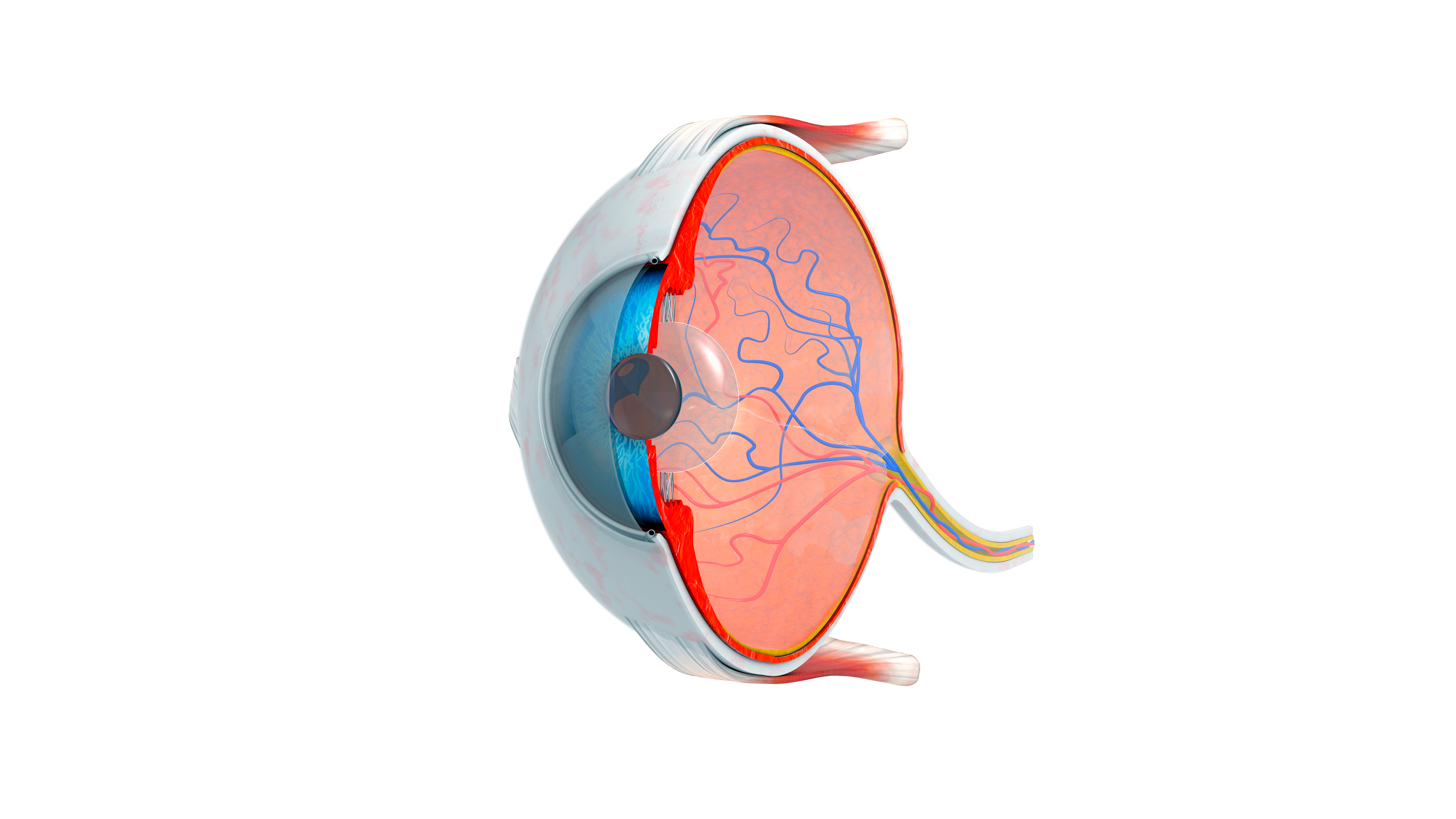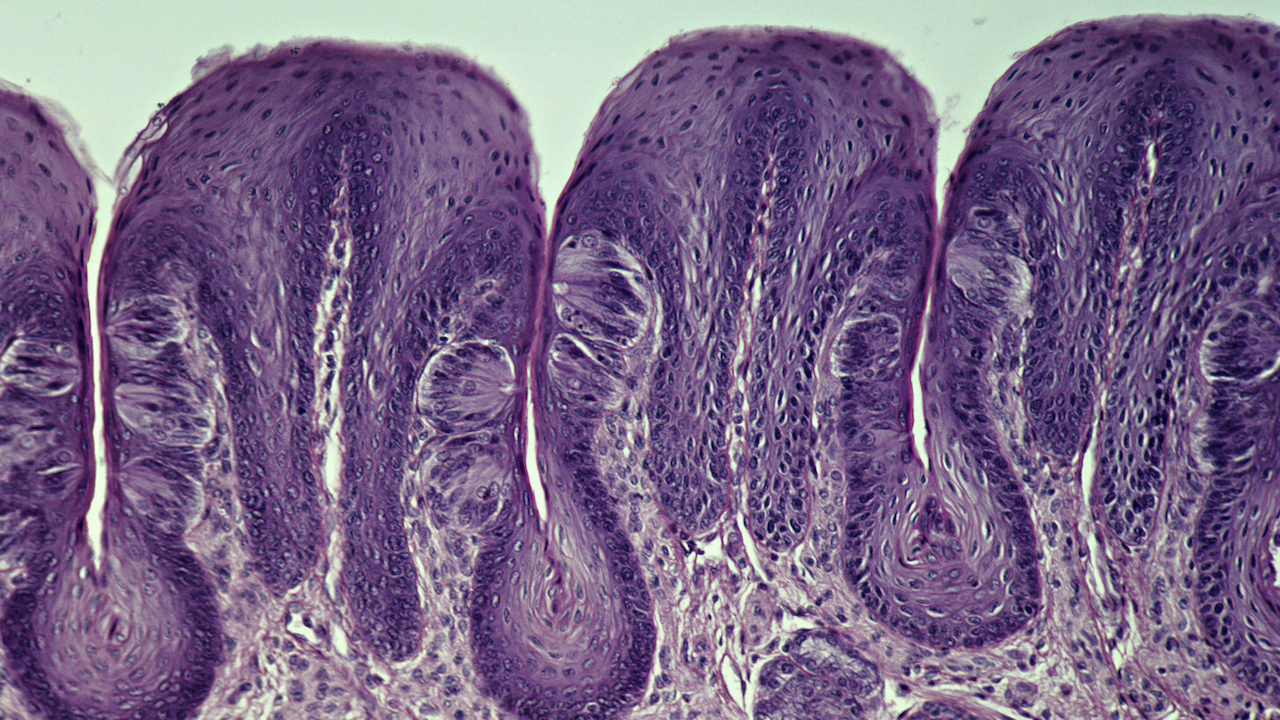The 5 human senses — and a few more you might not know about
Humans have more than five senses that help us navigate the world.

There are five basic human senses: touch, sight, hearing, smell and taste. The sensing organs associated with each sense send information to the brain to help us understand and perceive the world around us. However, there are other human senses in addition to the basic five. These lesser-known senses include spatial awareness and balance. Here's how the human senses work.
Sense of touch

Touch is thought to be the first sense that humans develop. Touch consists of several distinct sensations communicated to the brain through specialized neurons, or nerve cells, in the skin. Pressure, temperature, light touch, vibration, pain and other sensations are all part of the touch sense and are all attributed to different receptors in the skin.
Touch is essential for our survival: allowing us to explore and interact with our environment. Touch is also very important to our well-being. For example, research has shown that touch can convey compassion from one person to another.
Touch can also influence how humans make decisions. Texture can be associated with abstract concepts, and touching something with a texture has been shown to be able to influence the decisions a person makes.
"Those tactile sensations are not just changing general orientation or putting people in a good mood," said Joshua Ackerman, who was an assistant professor of marketing at the Massachusetts Institute of Technology (MIT) at the time he spoke to Live Science.
"They have a specific tie to certain abstract meanings."
Sense of sight

Sight, or perceiving things through the eyes, is a complex process. First, light reflects off an object to the eye. The transparent outer layer of the eye known as the cornea bends the light, some of which then passes through a hole in the eye called the pupil, to the lens.
Get the world’s most fascinating discoveries delivered straight to your inbox.
The iris, or colored part of the eye, controls how much light enters the organ by adjusting the size of the pupil. The pupil constricts to shut out light or opens wider to let in more light.
The lens then bends the light and focuses it on the retina at the back of the eye, which is full of nerve cells. These cells are shaped like rods and cones and are named for their shapes.
In each eye, there are approximately 120 million rod cells and six million cone cells; rod cells are more sensitive to light and help us to see in dim light, while cone cells function in bright light, allowing us to see color and fine detail.
The information translated from the light by rod and cone cells is sent as electrical impulses to the brain via the optic nerve.
People without sight may compensate with enhanced hearing, touch and smell, according to a 2017 study published in the journal PLOS One. Their memory and language skills may be better than those born with sight, as well, the study found.
"Even in the case of being profoundly blind, the brain rewires itself in a manner to use the information at its disposal so that it can interact with the environment in a more effective manner," Dr. Lotfi Merabet, co-senior study author and an associate professor of ophthalmology at Harvard Medical School, said in a statement in 2017.
Sense of hearing
The sense of hearing works via the complex labyrinth that is the human ear. Sound is funneled from the outside, along a passageway in the outer ear called the external auditory canal or ear canal. Then, sound waves reach the tympanic membrane, or eardrum. This is a thin sheet of connective tissue that vibrates when sound waves strike it.
These vibrations travel to the middle ear, causing three tiny bones there called the malleus, incus and stapes — to vibrate. The stapes bone then pushes a structure called the oval window in and out, sending vibrations to the organ of Corti, which is the organ for hearing. Tiny hair cells in the organ of Corti translate the vibrations into electrical impulses which travel to the brain via sensory nerves.
People retain their sense of balance because the Eustachian tube in the middle ear equalizes the air pressure in this part of the ear with the air pressure in the atmosphere. The vestibular complex in the inner ear is also important for balance because it contains receptors that regulate a sense of equilibrium. The inner ear is connected to the vestibulocochlear nerve, which carries information about sound and balance to the brain.
Sense of smell
The perception of smell begins in the olfactory cleft on the roof of the nasal cavity. Nerve endings within this cleft detect odors and transmit signals about them to the olfactory bulb in the brain where they are interpreted as smells.
Dogs are great smellers, but research hints that humans may be just as good. A review article published in 2017 in the journal Science, for example, highlighted that humans can discriminate among 1 trillion different odors, rather than only 10,000 smells that scientists once thought humans could differentiate.
"The fact is the sense of smell is just as good in humans as in other mammals, like rodents and dogs," John McGann, author of the review and a neuroscientist at Rutgers-New Brunswick University in New Jersey, said in a statement in 2017.
Humans have around 400 smelling receptors. While this isn't as many as animals that are super smellers have, the much more complicated human brain makes up for the difference, McGann said.
Decreased ability to smell is associated with various medical conditions, such as depression, anxiety and schizophrenia.
Old age can also lessen the ability to smell properly: more than 50% of people aged between 65 and 80 and around 62% to 80% of those over 80 have a reduced sense of smell.
Sense of taste
The gustatory sense is usually broken down into the perception of five different tastes: salty, sweet, sour, bitter and umami or savory. Contrary to popular belief, "spicy" is not a taste, rather it is a pain signal that relays information on temperature and touch to the brain.
Evolutionary-speaking, having a sense of taste helped humans to test the food they ate. A bitter taste, for instance, indicated that a plant might be poisonous. Something sweet, on the other hand, often meant the food was rich in nutrients.
Taste is sensed by clusters of taste receptor cells called the taste buds. Adults have between 2,000 and 4,000 taste buds. Most of them are on the tongue, but they also line the back of the throat, the flap of tissue that blocks the windpipe when you eat or drink, the nasal cavity and the upper part of the food pipe. Taste receptor cells in the taste buds form capsules that are shaped like flower buds or oranges. The tips of these capsules have pores with tiny extensions called taste hairs. Proteins on these hairs bind taste-producing chemicals to the receptor cells.
It is a myth that the tongue has specific zones for each taste. The five tastes can be sensed on all parts of the tongue, although the sides are generally more sensitive than the middle. About half of the sensory cells in taste buds react to several of the five basic tastes, however the cells differ in their level of sensitivity toward them.
This means that each cell has a specific palette of tastes with a fixed priority ranking: so some cells may be more sensitive to sweet taste, followed by bitter, sour and salty, while others have different sensitivity rankings. The full experience of a flavor is produced only after all of the information from the different parts of the tongue is combined.
The other half of the sensory cells in taste buds are specialized to react to only one taste. It's their job to transmit information about the intensity of a particular taste, for instance how salty or sweet something tastes.
Other factors help build the perception of taste in the brain. For example, the smell of food is generally believed to affect how the brain perceives its' taste. Smells are sent to the mouth in a process known as oral referral.
The texture of food, translated by the sense of touch, also contributes to taste.
The sense of space
In addition to the traditional big five senses, there is another called proprioception that deals with how your brain understands where your body is in space.
Proprioception includes the sense of movement and position of our limbs and muscles. For example, proprioception enables a person to touch their finger to the tip of their nose, even with their eyes closed. It also allows us to balance on one leg. People with poor proprioception may be clumsy and uncoordinated.
A small study published in the New England Journal of Medicine in 2016 found that a gene called PIEZO2 may play an important role in proprioception. Researchers deciphered this after discovering that mutations in the gene caused two patients to have issues with balance and movement, as well as the loss of certain types of touch.
"The patient's version of PIEZO2 may not work, so their neurons cannot detect touch or limb movements," Alexander Chesler, lead study author and a senior investigator at the National Institutes of Health (NIH) said in an associated statement.
Additional senses & variations

There are more subtle senses that most people never really perceive. For example, specific receptors in our muscles detect our movements, while others in our arteries detect levels of oxygen in certain parts of the bloodstream.
Sometimes, people may perceive several unrelated senses simultaneously. For example, those with synesthesia can see sounds as colors, or associate certain sights with smells.

Ailsa is a staff writer for How It Works magazine, where she writes science, technology, history, space and environment features. Based in the U.K., she graduated from the University of Stirling with a BA (Hons) journalism degree. Previously, Ailsa has written for Cardiff Times magazine, Psychology Now and numerous science bookazines. Ailsa's interest in the environment also lies outside of writing, as she has worked alongside Operation Wallacea conducting rainforest and ocean conservation research.
- Emily CookeStaff Writer
 Live Science Plus
Live Science Plus








